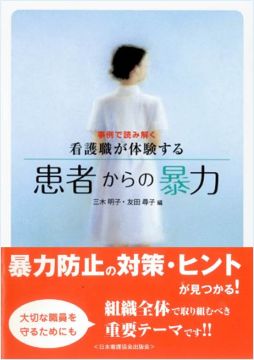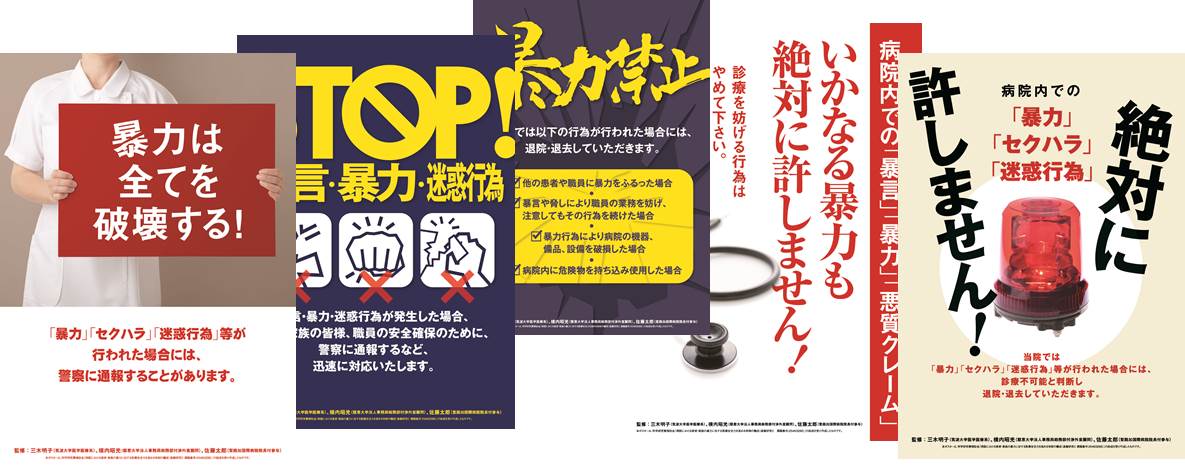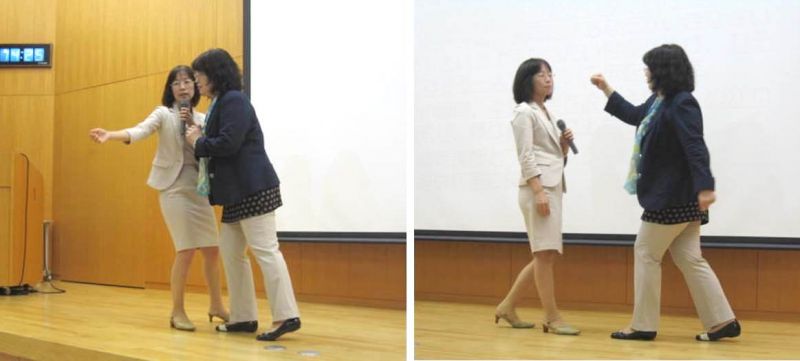TSUKUBA FUTURE
#030 Aiming to Protect Health-care Staff from Aggression and Violence
Associate Professor MIKI Akiko, Faculty of Medicine, Psychiatric and Mental Health Nursing

The public was shocked by recent news of a patient stabbing a doctor in a Sapporo hospital examination room (in August 2014). People asked how such a thing could have happened. Yet, according to Prof. Miki, patient stabbings of hospital workers are not as uncommon as one would think. While medical malpractice and abuse toward patients often make the news, the assault of a hospital worker rarely does. The public seems to express little interest in such incidents. Moreover, the workers themselves do not recognize acts of abuse for what they really are—violence—which includes verbal harassment or psychological abuse, in addition to physical assault. At one time the accepted wisdom was that violent patient behavior came with the job and was something that workers just had to put with. But recently the issue has been coming into the public light, as exemplified by workers' compensation claims that are starting to be made. The call to reduce exposure to workplace violence has been growing among workers in the rail industry. Similarly, in the healthcare industry the stance of saying "no" to workplace violence is gradually growing firmer.
The incidence of hospital violence is most prevalent among in-patients, and the nurses who care for them make easy targets. Contributing to this situation, most nurses in Japan are female; plus, a nurse is available at all times to attend to a patient—24 hours a day, 365 days of the year. Moreover, treating and caring for patients often involves physical contact, and because of this close contact nurses are easily subjected to physical, verbal, and sexual abuse. In the past, people tended to write off abusive behavior, attributing it to patients' feelings of frustration caused by their illness. But the undeniable fact is that in countless cases the violence cannot be justified for any reason whatsoever. In some cases nursing personnel were struck hard enough to cause a bone fracture, or were abused to such a degree that caused mental trauma or lasting aftereffects leading to their quitting the profession. The abuse can easily escalate when hospitalized patients repeatedly harass or act violently toward certain members of the staff. Many cases also involve outpatients that take out their personal and social frustrations on hospital staff.

Her guidebook highlights cases of hospital violence and provides ideas on how to deal with situations.
When Prof. Miki herself worked as a nurse she was subjected to a series of abuses and she responded by blaming her own attitude toward the patient as having caused the violence. But after becoming an educator she received a major shock when she learned of students who could not join in the praxis training or who had given up their dream of becoming a nurse because they had been attacked by a patient. Students agonize that their own poor skills were the cause of the assault, and become unable to interact with patients anymore. Some patients take advantage of the weak position of the students and harass them verbally or sexually when nurses or educators are not present, figuring that the students will not report the incident. A survey revealed that six in 10 nursing students in praxis experienced some form of abuse before graduating. As explained earlier, patient violence against hospital workers used to be hushed up and was almost entirely unknown by the public. Some hospitals, when asked to participate in her survey, stubbornly insisted that violence did not occur and refused to cooperate. Prof. Miki continued with her fact-finding mission a step at a time, while also taking various experiential courses in Japan on how to deal with violence. She discovered that learning how to defend oneself physically alone would not be effective in spur-of-the-moment situations when faced with violent behavior. She thus concluded that, while learning techniques to avoid injury are important, other preparations are just as vital. First, situations must not be allowed to develop wherein a worker becomes at risk of injury. Also, no one should put up with abuse of any kind. It must not be shrugged off; workers must not keep quiet about such an incident.

Poster designs drawn up by Prof. Miki to match the characteristics of different types of hospitals.
Prof. Miki has documented over 700 incidents of harm-causing violence in hospitals around Japan. She has published a collection of select cases, and aims to further analyze assault patterns and accumulate knowledge on the forms that violence takes. She has also produced and distributes different kinds of posters to put up in hospital waiting rooms. The posters are purposely attention-grabbing to serve as a deterrent to violence. They express the hospital's firm stance against violence, letting people know that the police will be called in if a situation gets out of hand. When most patients see these posters, rather than feeling uncomfortable they ought to feel safe, because no one wants to see other patients get loud and start making hostile accusations or become physically violent. Prof. Miki is currently providing training to front-line hospital workers that incorporates this stance. The training emphasizes looking for and recognizing signs of danger in advance, borrowing the concept of KYT (Kiken Yochi Training—hazard prediction) directly from Japanese manufacturing. If a worker senses danger and feels that a patient may become physically violent, the training teaches them to back away instead of confronting, find an escape route, make an emergency call, and quickly get themselves out of danger. They are taught to be especially cautious in closed rooms such as an examination room. Where one stands and the physical distance from a patient about to attack are vital to one's safety. When breaking up a fight between patients, it is equally vital to pay attention to positioning. The approach taken by a hospital administration is vital as well. While putting up deterrence posters is a positive step, the hospital must also provide supportive care to staff who have been the victims of violence. If repeated violent incidents have occurred, the hospital management must work closely with the police to keep an eye on the situation. The number of hospitals hiring former police officers to supplement their security detail is on the increase; they are now known as "hospital police." Incidents of patient disturbances also include complaining loudly about the cost at the cashier and refusing to pay. Such cases not only involve pecuniary damage; they induce severe stress in the attending hospital staff and not infrequently involve a physical assault.
Prof. Miki currently receives numerous requests from hospitals and other organizations to deliver lectures, which she tries to fulfill as her university schedule allows. She gives priority to individuals and hospitals currently dealing with the problem of hospital violence, and in the process she meets many healthcare workers who have been assaulted or harassed. She urges administrators to protect their workers and at the same time teaches the workers the kind of stance they need to take in order to deal safely with and prevent violence. She advocates leaving behind the notion that patients are not to be held accountable for their abusive behavior—to stop condoning violence. Rather, violence needs to be addressed.
To work in healthcare is a calling with a profound meaning. Prof. Miki travels around Japan, dedicating her efforts to ensuring that hospitals maintain truly safe working environments so that workers in this profession do not have to suffer ill effects to their health from assaults and other incidents of violence directed toward them while performing their duties.

Hospital safety education in action.
Prof. Miki provides training on where to stand when facing a patient who is about to get violent. Blocking the patient's path can result in being shoved. (Left) Standing back to avoid an assault leaves one still in range of a punch. (Right)
Prof. Miki currently receives numerous requests from hospitals and other organizations to deliver lectures, which she tries to fulfill as her university schedule allows. She gives priority to individuals and hospitals currently dealing with the problem of hospital violence, and in the process she meets many healthcare workers who have been assaulted or harassed. She urges administrators to protect their workers and at the same time teaches the workers the kind of stance they need to take in order to deal safely with and prevent violence. She advocates leaving behind the notion that patients are not to be held accountable for their abusive behavior?to stop condoning violence. Rather, violence needs to be addressed.
Article by Science Communicator at the Office of Public Relations


